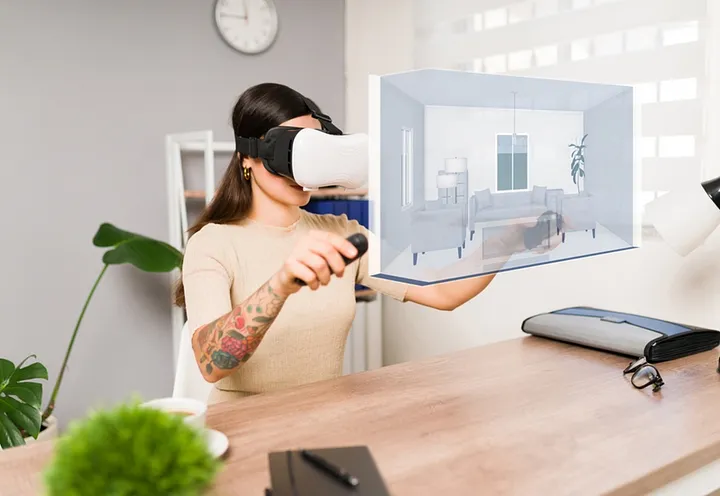
Virtual Reality For Architecture
The architectural realm, renowned for its ceaseless innovation, is now embracing a game-changing technology – Virtual Reality (VR). Virtual reality for architecture is revolutionizing the way architects create, collaborate, and present their projects. In this article, we’ll dive into the world of Virtual Reality for architecture and explore how it’s reshaping the industry’s future.
Unleashing the Potential of Virtual Reality for Architecture
Virtual Reality is a technology that immerses users in computer-generated environments, providing an interactive and immersive experience. Virtual reality for architecture has opened doors to a multitude of advantages for architects, designers, and clients.
Benefits of Virtual Reality For Architecture
-
- Immersive Design: Architects and designers can step into their designs, experience them on a human scale. This immersive approach enhances the comprehension of spatial relationships, proportions, and aesthetics.
-
- Collaboration: VR facilitates effective collaboration between architects and clients by visualizing and experiencing designs in real-time. It bridges the gap between technical professionals and clients without design backgrounds.
-
- Client Presentations: Architects can present designs to clients in an immersive and interactive manner, enabling clients to “walk through” the project, making it easier to grasp and approve the design.
-
- Site Analysis: VR assists architects in site analysis by creating virtual models of existing environments. This aids in understanding site characteristics and potential challenges.
-
- Cost and Time Efficiency: Identifying design flaws and making changes is quicker and cost-effective in a virtual environment, reducing the need for costly revisions during construction.
Applications of Virtual Reality For Architecture
-
- Design and Concept Exploration: Architects can use VR to explore various design options, testing different concepts before finalizing a design.
-
- Client Presentations: VR presentations enable clients to visualize projects and make informed decisions. They can also provide real-time feedback.
-
- Virtual Site Visits: Virtual Reality simulates site visits, helping architects understand site conditions and make design decisions accordingly.
-
- Construction Simulation: VR can simulate the construction process, aiding in issue identification and resolution before actual construction commences.
-
- Educational Tools: Architecture students and professionals can leverage VR for educational purposes, experiencing and learning about iconic buildings and design principles.
Conclusion
Virtual Reality is transforming the architectural landscape, making the design process more immersive, collaborative, and efficient. As technology continues to advance, the potential applications of Virtual reality for architecture are limitless. Whether you’re an architect aiming to enhance your design process, a client seeking a better understanding of a project, or an enthusiast interested in the future of architectural design, Virtual Reality is reshaping the way we build and experience spaces. Embrace this technological revolution and step into a world where architecture is designed, presented, and understood in ways never before imagined. The future of architecture is here, and Virtual Reality is at the forefront, guiding us towards innovative and sustainable designs.
